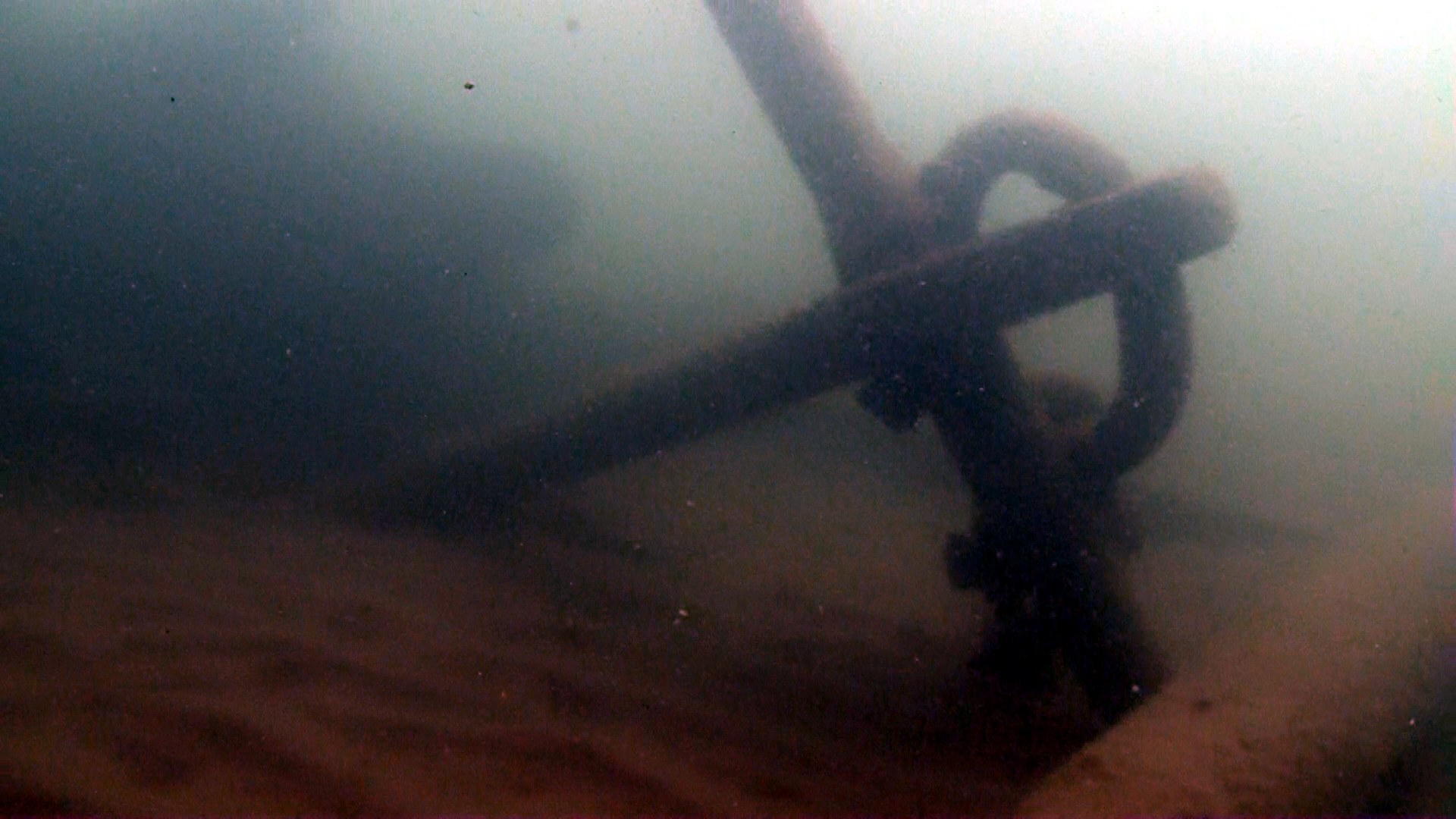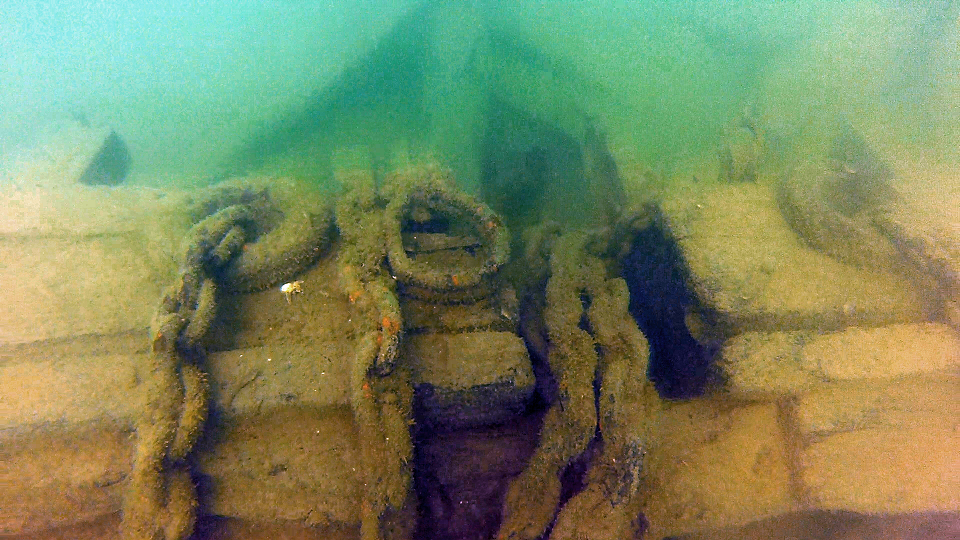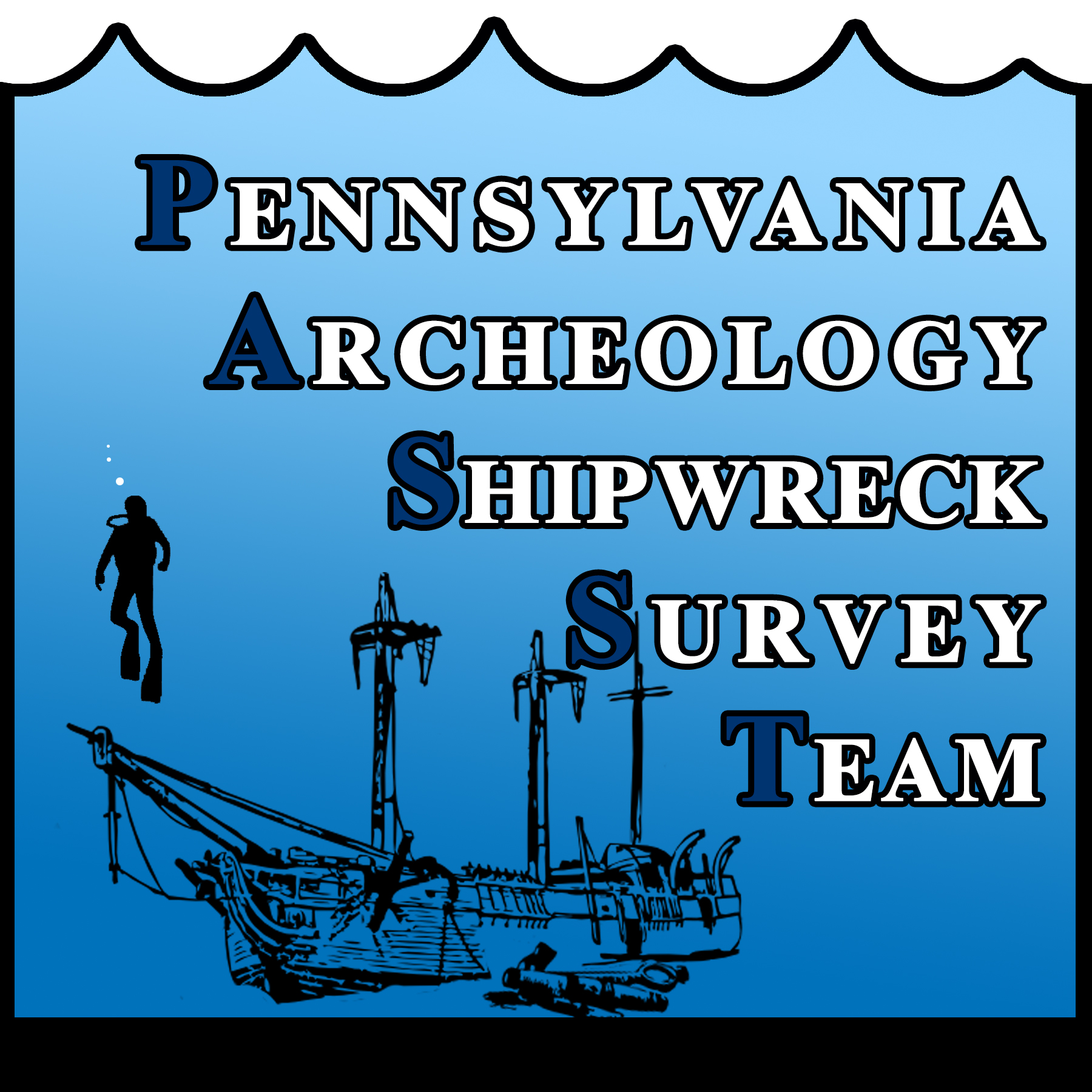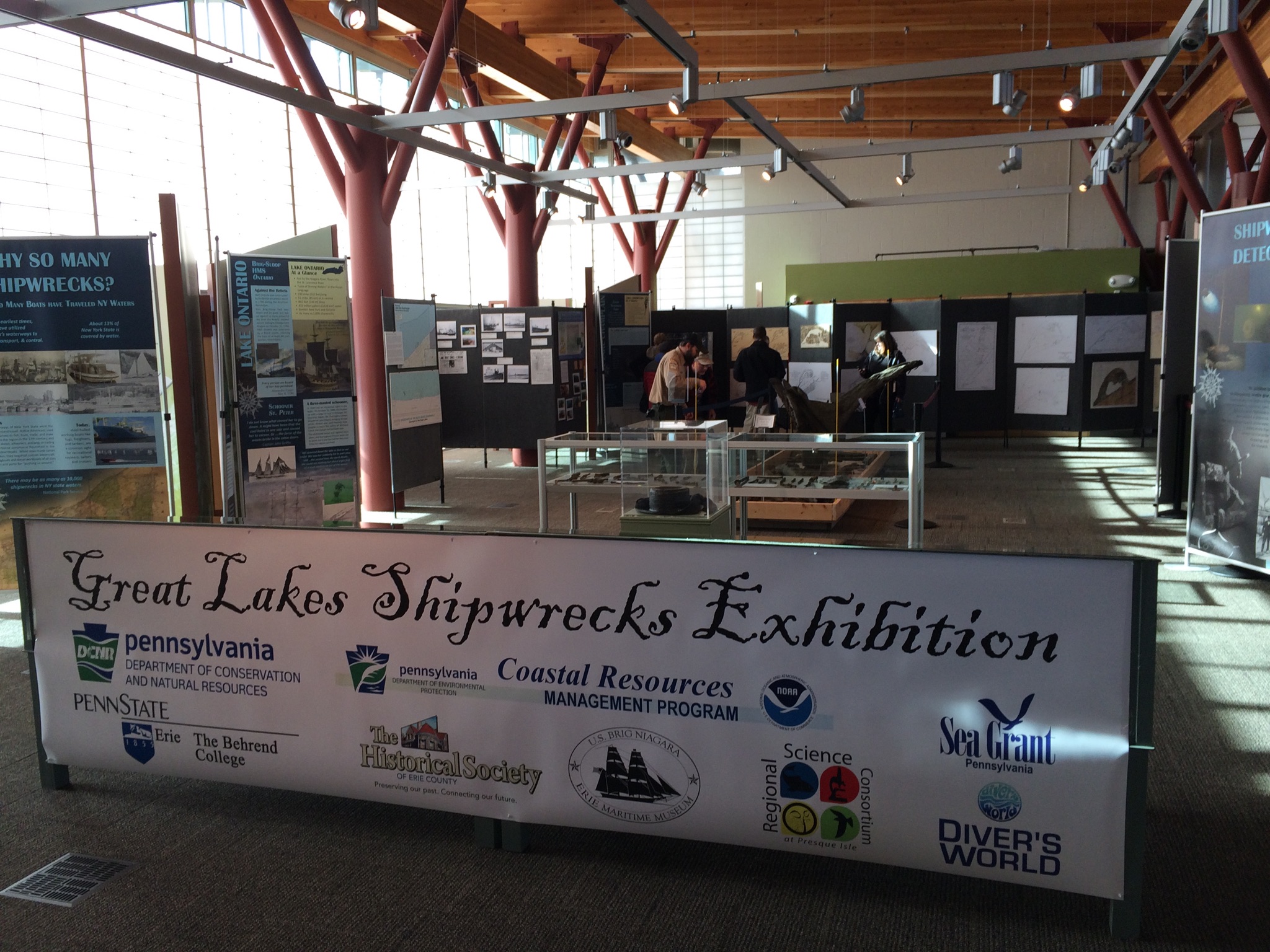It had been blowing hard from the east and the red sky on the July morning of 2013 did not concern Presque Isle lifeguard Darren Reading as he headed out for a group swim off the shore of the beach.
According to Reading, “I saw a fish and followed it under the water. I couldn’t believe what I saw.” After several more dives on the site, he swam to the shore and contacted park personnel by cell phone. A Remotely Operated Vehicle (ROV) was lowered on the site and two Rodgers style anchors were visible in the monitor screen.

This underwater photo captures the anchor of a ship that wrecked in Lake Erie. Image courtesy of PASST.
Reading had discovered a long-lost shipwreck on the shores of Presque Isle State Park in Northwestern PA.
After permission was granted by the Park Superintendent, subsequent survey dives yielded spectacular photographs. Divers were able to measure chain links and the size of the anchors, which enabled staff to determine the tonnage of the ship.

Underwater photo of an iron chain discovered in Lake Erie from a mid-19th century shipwreck. Image courtesy of PASST.
What Reading had found was hardly a ship. It was in fact the debris field of a schooner, laying on her port side, that had “run for the shore” during a storm in the mid 1800s.
There were at least seven ships that had run from the storms of Lake Erie to beach on the shores of Presque Isle. Many were caught in the storms of November, some were saved by the Lifesaving service, some perished in the process. But as the winter ice took hold of the beached ships, the masts were sheared and the ships disappeared beneath the sand.

This map shows shipwrecks along the coast of Lake Erie. Image courtesy of PASST.
A question that did not sink was… ”what do we do with a shipwreck?”
With only a piece of the Delaware River to the east and 76 miles of shoreline along Lake Erie, Pennsylvania is not generally associated with shipwrecks. The jurisdiction of submerged historic resources lies with the commonwealth and is supported by the federal “Shipwreck Act of 1988.”
Under the guidance of the Pennsylvania Historic and Museum Commission (PHMC), a team of local stakeholders was formed to investigate the presence of shipwrecks along the shores of PA. The team was comprised of state agencies, park personnel, historical researchers, local dive operations, educators, and technicians.

Divers measure and document surviving pieces of shipwrecks for information about the vessels that wrecked. Photo courtesy of PASST.
In 2015, the Pennsylvania Archaeology & Shipwreck Survey Team (PASST) was formed. PASST’s mission is to document through scientific methods underwater archaeological resources. The organization is focused on assembling a team of specialists including Marine Archeologists, researchers, historians and technicians to inventory PA shipwrecks. PASST serves to inventory underwater PA historical sites, provide training for its associates and develop outreach and educational curricula to promote the preservation and conservation of Pennsylvania’s Maritime Heritage.

An initial grant was funded by the PA Coastal Resource Management Program, which complemented by a marine spatial survey that was underway. After extensive research, it was determined that there were 196 reported sinkings between the borders of New York, Ohio and Canada in an area that became known as the Lake Erie Quadrangle.
Dr. Ben Ford, a renowned marine archaeologist from Indiana University of PA, completed survey training for the volunteer dive team. Divers began the survey process of collecting data on measurements, location, depth, photographs and conditions whereas the historians dove into the archives to tell the story of the sunken ships.
As a result of the interest that came from the discovery, a “Great Lakes Shipwreck Exhibit” was hosted at the Ridge Environmental Center in Erie, PA during the winter of 2016-2017. Approximately 21,000 people attended the exhibition over the course of three months. It included a simulated debris (or scatterfield), shipwreck story panels, Erie Maritime Museum artifact displays, living history interviews and guest speakers, which highlighted the Maritime History of the area.

Erie Maritime Museum’s exhibit on shipwrecks in 2016-2017. Photo courtesy of PASST.
Our next Shipwreck Exhibition is scheduled to open on Nov 15 and run through April 15, 2018. It is taking place at the Tom Ridge Environmental Center and is free to the public between 10-6pm each day. If you’re in the area, plan to stop by and learn more about this little known aspect of Pennsylvania’s history!
The PASST effort to inventory the known shipwrecks of the shores of Pennsylvania continues with an average of 3-4 wreck sites being surveyed each season. As for the wreck of the unknown schooner off the shores of Presque Isle, it was covered by seven feet of sand by the end of the summer…preserved until history meets its hull once again.
This week’s post is by David Boughton, Maritime Education Specialist, Pennsylvania Sea Grant.

David joined Pennsylvania Sea Grant in 2006 as a Maritime Education Specialist. He has developed and facilitated a variety of shipboard education/research programs including S/V Momentum, Lake Erie Science aboard Gannon’s R/V Environaut, Tall Ship Program aboard the US Brig Niagara and Denis Sullivan providing shipboard education opportunities for over 13,000 students. He has also developed classes/projects for Underwater Robotics, Project Fly, Summer Field Studies/ College for Kids, Fish Habitat restoration, distance learning modules, NOAA drift buoy project and weather balloon studies.
Most recently he has been involved in Shipwreck Research and the formation of the PA Archaeology and Shipwreck Survey Team (PASST) under the Regional Science Consortium. He is currently working on an inventory of shipwrecks in the Lake Erie Quadrangle, a survey of several Archaeological sites on Presque Isle State Park, as well as the development of an artifact conservation lab at the Research wing of the Ridge Environmental Center.
Between February 1 and April 25, 2016 he developed the Great Lakes Shipwreck Exhibition at the Ridge Environmental Center which highlighted our Maritime Heritage throughout the Great Lakes with a special emphasis on Lake Erie. The event drew over 21,000 visitors and included a living history interview project as well as an artifact show/tell program.
Boughton has an undergraduate degree from Penn State in Recreation Management and a Masters in Teaching from the College of Notre Dame. He has 15 year’s federal experience with the US Navy and US Park Service as well as 16 years in the classroom.
Leave a Reply